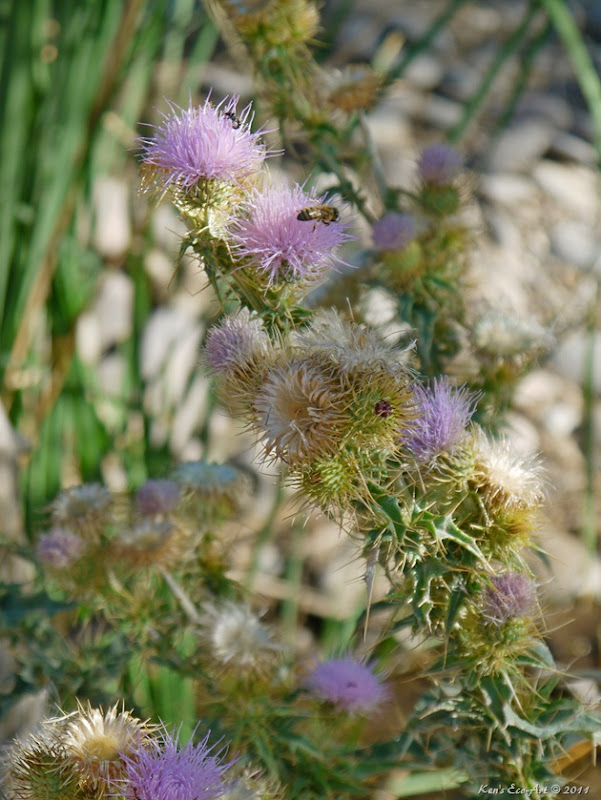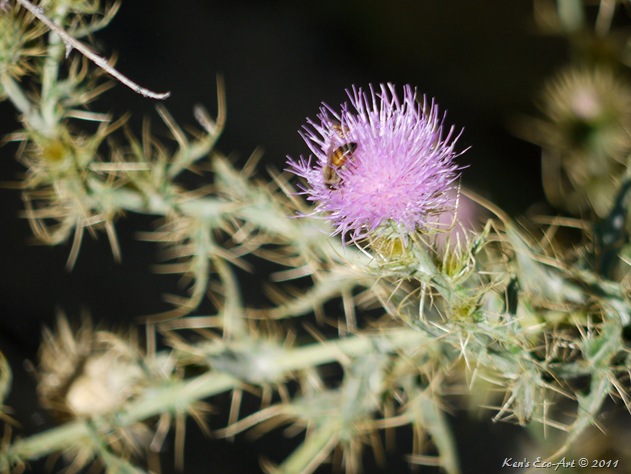| Description: Cirsium ochrocentrum is a perennial that grows 5 feet. The flowers are hermaphrodite (have both male and female organs) and are pollinated by bees, flies, lepidoptera, beetles, and self.The plant is self-fertile. It prefers light (sandy), medium (loamy) and heavy (clay) soils and requires well-drained soil; preferring acid, neutral and basic (alkaline) soils. It cannot grow in the shade. Oddly, it requires dry or moist soil. The picture on the right is of a new root, probably only a matter of weeks old. |
|
| Thistles are known for their effusive flower heads, usually purple or rose to pink, also yellow or white. The radially symmetrical disk flowers are at the end of the branches. They have erect stems and prickly leaves, with a characteristic enlarged base of the flower which is commonly spiny. The leaves are alternate, and some species can be slightly hairy. The word 'Cirsium' derives from the Greek word kirsos meaning 'swollen vein'. Thistles were used as a remedy against swollen veins. The entire plant is diaphoretic and diuretic. It is infused overnight in cold water and the water is then drunk in the treatment of syphilis. A liquid from the boiled blossoms has been used to treat burns and skin sores. A decoction of the root has been taken by both partners as a contraceptive. It has also been taken five times a day in the treatment of diabetes. The flower blooms from April to late August. | ||
|



